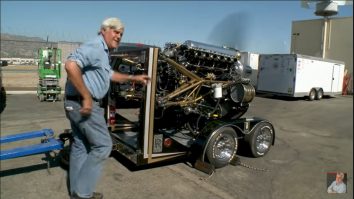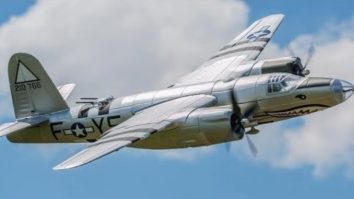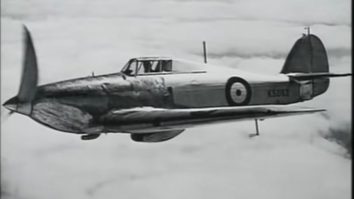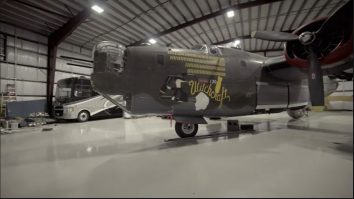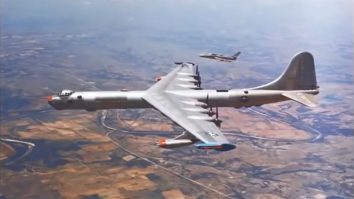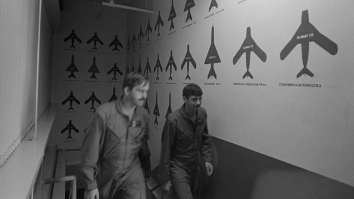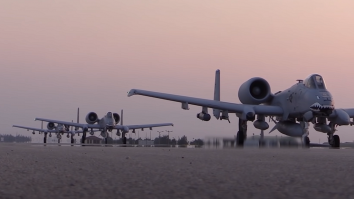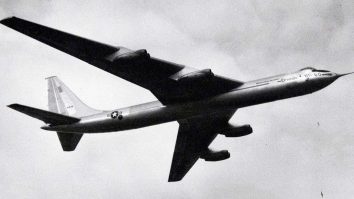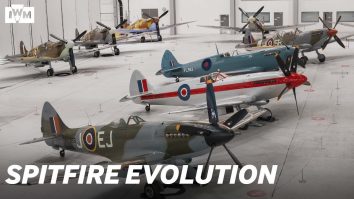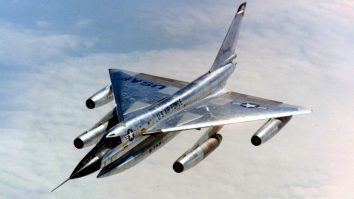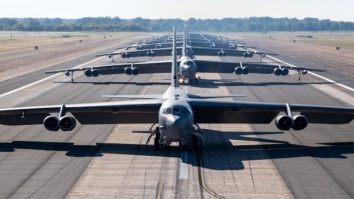The Curtiss SB2C Helldiver was supposedly the Navy’s frontline carrier-based bomber for the entire duration of World War II. However, it was plagued with problems throughout its development and even after it was officially introduced. Here are the five reasons the “Helldiver” was the worst and final navy dive bomber: It showed signs of trouble […] More
In another episode of Jay Leno’s Garage, American TV host Jay Leno showcases the power and incredible engineering of his Merlin 1650-1 engine. The engine was well-known to be the very heart of famous World War II planes, like the P-51 Mustang, and the legendary Lancaster bombers. Here are ten fun facts that you need […] More
The B-26 Marauder became one of the most feared aircraft in World War II. Engineer Peyton Magruder of the Glenn L. Martin Company created this revolutionary twin-engine medium bomber. But it soon gained a notorious reputation as an aircraft far too dangerous to fly. Here are the ten disadvantages of flying the B-26 Marauder: 1. […] More
The Hawker Hurricane was the British’s single-seater monoplane aircraft. It was designed by Sir Sydney Camm of Hawker Aircraft Limited in the early 1930s. It served during WWII, delivering impressive air victories during the Battle of Britain. It would also twelve years servicing the RAF doing performing various roles. Here are the ten facts that […] More
Conceived by Consolidated Aircraft, the B-24 helped the United States become a global force. It also allowed the US to strike enemy territory more than ever before. Here are the ten reasons why the B-24 was the true workhorse: 1. It was a force to be reckoned with It was 67 feet long, 18 feet […] More
Built by Convair, the B-36 Pacemaker was operated by the United States Air Force between 1949-1959. During the 1950s, aircraft was one of the key elements in maintaining peace during the Cold War with Russia. Here are the ten ways that the B-36 Pacemaker was a completely unique aircraft more than anything else: 1. It […] More
1. Improved Kill-to-Loss Ratio Earlier results taken from the first half of the Vietnam War showed that the Navy’s losses were piling up. They were losing aircraft and aircrew at an alarming rate. After the program ran its course, the kill ratios from the second stage of the war favored the US better. According to […] More
1. Linkless Ammunition Feed The ammo used for the GAU-8/A goes through a linkless and double-ended ammunition feed. This linkless system significantly reduces the potential of jamming and allows the spent casings to be returned to the ammunition drum. In addition, it also prevents the expended shells from damaging the plane. 2. Redundant Hydraulic Systems […] More
1. Came From the B-36s In March 1951, the US Air Force gave a contract to Convair to convert the older B-36Fs to the newer B-36Gs. After much planning and deliberation, the proposed aircraft was too different from the B-36 models. Even though it shared 72% of its parts with the B-36, the name was […] More
1. Elliptical Wings The way its wings were designed made it fly as smoothly as possible. Spitfires could recover by pushing the nose down when facing the problem of stalling. The pre-stall buffet warnings also helped pilots determine if a stall would happen soon. 2. Improved Horsepower From the start, the Spitfire could only put […] More
Presence of SAMs The threat of the SA-2 Guideline did not do the B-58 any favors. In order to stave off the missiles, the B-58 had to fly at lower altitudes but the denser air meant it could not reach supersonic speeds. Constant Repairs A warbird getting repaired is a normal thing. But if your […] More
The Boeing B-52 Stratofortress is an American long-range, heavy strategic bomber capable of dropping and launching nuclear bombs, missiles, and guided precision weapons. It was first designed by the Boeing company in 1948 for the United States air force. While this plane may seem like an old relic from the past, here are ten excellent […] More



